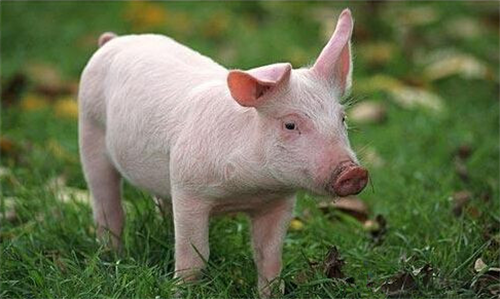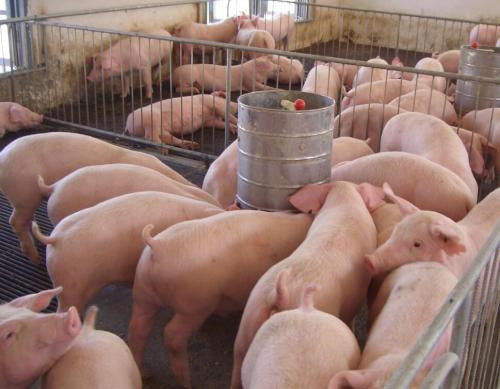How to reduce the stress of purchased piglets? Let's teach you some tricks!
Piglet transport stress refers to the stress syndrome in which piglets are stimulated by stress factors in the process of piglet shipment, resulting in decreased production performance, persistent high fever and acute death.
At the present stage, there are many people who buy piglets and raise them, but after buying pigs back to the farm, there is a phenomenon of large groups of piglets in many pig farms, with a very high mortality rate, some pig farms are completely wiped out, and farmers have suffered heavy losses.
The reason for these losses is that piglets are affected by various stress factors in the process of transportation, such as transportation stress, environmental changes, feed changes, etc., which cause mental and physical pressure on piglets, resulting in gastrointestinal dysfunction and endocrine disorders, resulting in an increase in the incidence of diseases and mortality in piglets.
The main points of feeding and management of purchased piglets are mainly from the following aspects:

1. First of all, it is necessary to understand the background of the pigs purchased, whether there is an epidemic or in a state of sub-health, and whether to do a good job of vaccination, so as to avoid buying pigs with disease. It is suggested that the sale farm can add a special anti-transport pig stress product "sprint treasure" to ensure that piglets can alleviate stress in the process of pig transportation.
2. Drink water or feed a small amount of feed in the middle of long-distance transportation. Pay attention to handling pigs and catching pigs to avoid injury to pigs.
3. The best density is to raise one pig per 0.8 square meters, and 10 to 15 pigs per column to avoid excessive density and population size.
4. After entering the pen, the pig should first drink 15 ℃ ~ 20 ℃ of clean warm water, which is added to the water to give it a special anti-transport pig stress product, Chongchuanbao.
5. according to the principle of less frequent feeding and gradual transition in the first week after entering the fence, it can be fed 5-6 times a day at the beginning, and 4 times a day after 7 days, regularly, and high-grade piglet feed with comprehensive nutrition and good digestibility should be selected.
6. it is necessary to provide a warm, dry, clean and comfortable living environment for pigs, adjust the temperature in the house, keep the enclosure hygienic and clean, do a good job of ventilation, ensure fresh air in the house, improve the air quality of the pig house, and reduce the concentration of ammonia.
7. To adjust the habits of feeding, sleeping, defecation and urine of pigs, and to do a good job in the positioning of pigs, we should observe the spirit, feeding and health of pigs at any time, and solve the abnormal situation in time.
8. The piglets need to be vaccinated when the stress state is relieved 20 days after the piglet is bought back.
9. Do a good job of disinfection on a regular basis, and the pigs will be dewormed about one month after entering the fence.
Losses caused by stress in pig transportation:
1. Weightlessness loss of live pigs, disability and death caused by transportation, and decline of carcass quality.
2. Decrease of reproductive performance and immunity.
3. The increase of demand and the emergence of deficiency.
The transportation of piglets is much stricter than that of commercial piglets, and what they have in common is to shorten the transportation time and reduce the loss, so as to prevent the piglets from death caused by extrusion stress, but the piglets are used to continue to feed, and try not to affect the growth in the later stage.
- Prev

The sow was vaccinated before and after pregnancy. Did you do it right? Deviation has a great influence.
The sow was vaccinated before and after pregnancy. Did you do it right? Deviation has a great influence.
- Next

The production efficiency of ternary sows is more than 30% lower than that of binary sows, how to narrow the gap?
The production efficiency of ternary sows is more than 30% lower than that of binary sows, how to narrow the gap?
Related
- On the eggshell is a badge full of pride. British Poultry Egg Market and Consumer observation
- British study: 72% of Britons are willing to buy native eggs raised by insects
- Guidelines for friendly egg production revised the increase of space in chicken sheds can not be forced to change feathers and lay eggs.
- Risk of delay in customs clearance Australia suspends lobster exports to China
- Pig semen-the Vector of virus Transmission (4)
- Pig semen-the Vector of virus Transmission (3)
- Five common causes of difficult control of classical swine fever in clinic and their countermeasures
- Foot-and-mouth disease is the most effective way to prevent it!
- PED is the number one killer of piglets and has to be guarded against in autumn and winter.
- What is "yellow fat pig"? Have you ever heard the pig collector talk about "yellow fat pig"?

